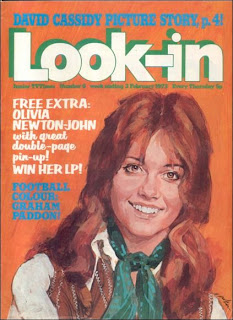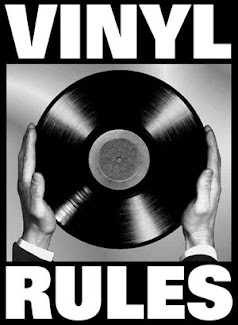“Thanks for the memory
thanks for it all
Wham bam thank you mam
thanks for the ball”.
Slade – Thanks for the Memory (wham bam thank you mam)
So sang Slade in 1975 when glam was all but dead. It had been a relatively short ride, but a memorable one.
From 1971-1975 everything (musically at least) was tainted by glam rock, from Rod Stewart to The Rolling Stones. Glam Rock came to mean something different to everyone. Ultimately, glam became an opportunity for just about anyone to explore and exploit.
Some good bands had appeared during its twilight period, the most enduring being Cockney Rebel and Queen, but glam rock as a youth movement and a musical sub-genre was essentially over by the end of 1975.
It had been in slow decline since early in 1974. The best of the glam anthems had been and gone and established glam artists had either moved on to new pastures or were simply treading water.
A few artists were hanging on for grim death, trying to keep the whole thing going, but essentially glam was dead, its ability to outrage and shock had long since passed in the eyes of the public and mainstream media.
The last days of glam could almost have been some half drunken pub/club act singing ‘My Way’ to bleary eyed, partied out, disinterested punters for all anyone cared.
It was like a time travelling Sid Vicious catapulted back three years singing his trashy and dare I say ‘punk-glam’ version to a shell shocked audience.
“And now the end is near, and so I face the final curtain”.
Maybe Frank Sinatra’s more laid back version would be better suited to the lazy, ‘end of days’ feel of glam’s decline, but Frank is obviously not glam in any way, although I’m sure he would have looked great in satin and tat singing ‘Queen Bitch’.
So ‘Whatever happened to the teenage dream”?
Well it just sort of fizzled out as the kids woke up to other things, eventually showing distain and disinterest in an old sound and style. There was still the odd twitch here and there of the glam corpse, even as late as 1976/77, but by then it really was the end.
With Ziggy now in 'retirement', Bowie went on to create the album ‘Diamond Dogs’, which many interpreted as his farewell to the glam movement. His next incarnation would be as a soul crooner, albeit of the ‘plastic’ variety.
Likewise, Marc Bolan made a move toward soul music, though less successfully than Bowie. A combination of substance abuse, and internal strife all helped derail the career of Bolan and T. Rex, as well as alienating fans with a rapid change of styles.
The band quickly faded from the musical mainstream as their album sales and popularity collapsed. His later work produced rather messy and monotonous records with banal lyrics and recurring riffs.
Slade and the Sweet had hits well into the mid 1970s, but when punk arrived, both bands eventually became passe. In 1977, the Sweet changed their image and sound to be more 'progressive,' while Slade carried on as they were, until they found more commercial success (albeit sporadic) in the 80s.
Mud also continued to have smaller hits for a few years, but their future was in the cabaret and club circuit.
Others searched for integrity in their music, Roxy Music carried on until their 1976 split, although when the band reformed they experienced their greatest period of commercial success in the new wave movement of the early 1980s.
Former keyboardist Brian Eno released a few albums of glam leanings before becoming a pioneer in ambient music and a popular producer.
In the United States, the New York Dolls split in 1975, and Lou Reed and Iggy Pop were doing their own thing in their own way.
Gary Glitter carried on as an even greater parody of himself well into the new millennium, until his decidedly un-musical activities caught up with him.
Glam also-rans like Alvin Stardust and the Glitter Band continued for a while before sliding into semi obscurity/retirement. And even Suzi Quatro, eventually turned to musical theatre and an acting career.
There was a storm on the horizon, moving quickly towards the safe harbour where glam was sheltering. A lot of the glam artists were after all already just the “Flotsam and Jetsam of the Music Biz, the Walking Dead and Has-Beens of the Recent (and Not-So-Recent) past”.
‘Year Zero’ and punk rock was about to end their comfortable state of affairs and calm waters for good.
Even in the glam heyday of 1973 a Melody Maker review of the first Queen LP was captioned ‘The Fag-end of Glam’. So from that point of view it had already out stayed and out played its welcome.
“There were times when he wanted to be a musician, and times he wanted to be a star. That was his main internal struggle”. Producer Tony Visconti said when talking about Marc Bolan, but he could just as easily have been talking about glam rock in general.
A friend of mine stopped buying records after 1975, and didn’t really start again until 1979. He couldn’t give me a reason, possibly a hangover from the sweetness and sickliness of the glam years, or maybe he just lost interest. Who knows?
I left glam rock behind at 12, not really listening too, or thinking about it for a good many years, but it was always there, lingering just below the surface to jump out when I least expected it.
Often during some drunk Christmas or New Year disco, where I would be minding my own business and out would pop Slade over the sound system wishing me a merry Xmas and a glittering ‘Ho Ho Ho’.
It is only now in my middle age that I have come to appreciate the music and leave behind any prejudices that I had and can just simply listen to the songs and enjoy.
So rest in peace glam rock, and sincerely; wham bam thank you Glam, thanks for the ball.
 |
| Photo copyright Mick Rock Slade: Thanks for the Memory (wham bam thank you mam) - Last days of Glam Mix |































































.jpg)























